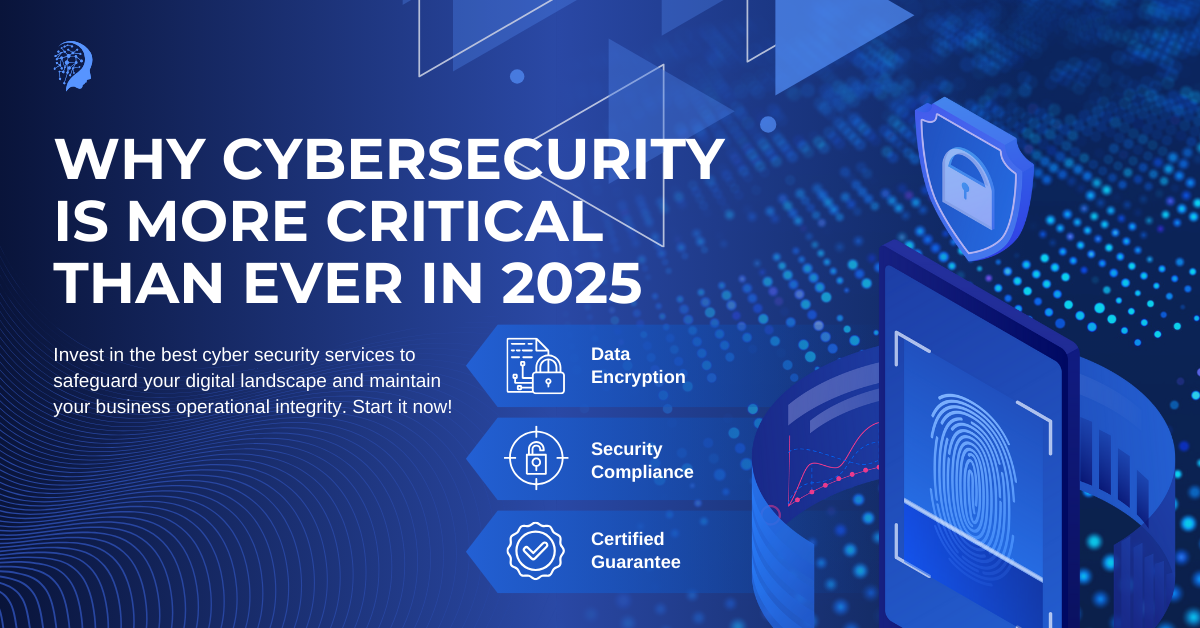In an era where digital transformation continues to reshape industries, the importance of robust cybersecurity practices has reached an unprecedented level. The year 2024 stands as a pivotal moment in the fight against evolving cyber threats, making cybersecurity more critical than ever. Here are the key reasons why:
1. The Proliferation of AI-Powered Attacks
Artificial intelligence (AI) has revolutionized cybersecurity, but it has also become a double-edged sword. Cybercriminals are leveraging AI to launch more sophisticated attacks, such as:
- Deepfake scams: Using AI-generated media to impersonate individuals for financial fraud or misinformation campaigns.
- Automated hacking: Employing AI tools to identify vulnerabilities faster than ever.
AI-driven threats include malware that adapts dynamically to evade detection, and phishing campaigns personalized using machine learning algorithms to exploit human behavior. The malicious use of AI in cybersecurity raises the stakes, demanding that organizations invest in equally advanced AI-driven defense systems and predictive analytics to detect and mitigate these attacks in real-time.
2. An Expanding Attack Surface
The rapid adoption of cloud computing, Internet of Things (IoT) devices, and remote work has dramatically expanded the attack surface for organizations. Key challenges include:
- Vulnerable endpoints: Remote workers’ devices are often less secure, creating entry points for attackers.
- Complex networks: Cloud-based and hybrid environments require consistent monitoring to prevent breaches.
In addition, IoT devices—ranging from smart thermostats to industrial sensors—often lack robust security measures, making them prime targets for hackers. These devices, interconnected within vast networks, can be exploited to launch Distributed Denial of Service (DDoS) attacks or infiltrate sensitive data repositories. Comprehensive endpoint protection and robust IoT security frameworks are no longer optional but essential.
3. The Rise in Ransomware and Supply Chain Attacks
Ransomware attacks have become more targeted and lucrative, often crippling critical infrastructure and businesses. Supply chain vulnerabilities—where attackers compromise a trusted vendor to infiltrate their client’s systems—pose a growing risk. Examples include:
- Critical infrastructure disruptions: Attacks on energy grids, healthcare systems, and financial institutions.
- Data exfiltration: Holding sensitive data hostage or leaking it publicly to demand ransoms.
The economic impact of ransomware has reached billions of dollars annually. Attackers now employ double extortion tactics, threatening not only to encrypt data but also to release it publicly if ransoms are not paid. To combat these threats, organizations must adopt advanced encryption, establish offline backups, and ensure vendors meet stringent cybersecurity standards.
4. Evolving Regulatory Landscape
Governments worldwide are introducing stricter data protection regulations to combat cybercrime. In 2024, businesses must navigate compliance requirements such as:
- GDPR updates in the EU.
- New cybersecurity mandates in the U.S. and Asia.
Industries handling sensitive data, such as healthcare and finance, face particularly stringent compliance demands. Regulatory frameworks like the Cybersecurity Maturity Model Certification (CMMC) in the U.S. are reshaping how businesses approach cybersecurity. Non-compliance not only results in hefty fines but also damages an organization’s reputation, emphasizing the need for robust cybersecurity practices. Regularly updating security policies and aligning them with global standards is now a competitive advantage.
5. Heightened Geopolitical Tensions
Cyber warfare has become a tool for state-sponsored actors to disrupt economies and destabilize governments. Recent incidents highlight the strategic use of cyberattacks as part of broader geopolitical conflicts. Businesses and governments alike must prepare for:
- Critical infrastructure attacks: Power grids, water supplies, and communication networks being targeted.
- Espionage: State-sponsored hackers stealing intellectual property or sensitive data.
Cyber warfare is no longer limited to direct attacks. It also involves misinformation campaigns and the sabotage of democratic processes. Organizations must adopt advanced threat intelligence systems to monitor geopolitical risks and establish collaborations with governments and cybersecurity agencies to counter state-sponsored threats effectively.
6. Human Error and Insider Threats
Despite technological advancements, human error remains one of the leading causes of cybersecurity breaches. Unintentional actions, such as clicking on phishing links, misconfiguring systems, or weak password management, create vulnerabilities that attackers exploit. Additionally, insider threats—whether malicious or negligent—pose a significant risk.
Organizations must prioritize security awareness training for employees, enforce multi-factor authentication (MFA), and implement stringent access controls. Advanced monitoring tools that detect unusual user behavior can also help mitigate insider risks.
How Organizations Can Stay Resilient
To address these escalating threats, organizations should adopt a multi-layered cybersecurity strategy, including:
- Zero Trust Architecture: Assuming no user or device is trustworthy by default. This approach minimizes potential attack vectors by verifying every access request within and outside the network.
- AI-Driven Security Tools: Utilizing machine learning to detect anomalies in real-time. AI-powered systems can proactively identify and neutralize threats before they cause damage.
- Continuous Training: Educating employees about recognizing phishing, social engineering tactics, and other attack vectors. Regular simulations can help ensure preparedness.
- Incident Response Plans: Preparing for breaches with well-defined response protocols. Effective incident management minimizes downtime and mitigates damage during a cyber crisis.
- Regular Audits: Continuously assessing and updating security measures to address emerging threats. Penetration testing and vulnerability scans can uncover weaknesses before attackers do.
- Collaboration Across Sectors: Sharing threat intelligence within industry networks and partnering with cybersecurity organizations strengthens collective defenses.
Emerging Trends in Cybersecurity for 2024
- Quantum-Resistant Cryptography: With quantum computing on the horizon, traditional encryption methods may become obsolete. Organizations are beginning to adopt quantum-resistant algorithms to future-proof their data security.
- Decentralized Security Solutions: Blockchain technology is being explored for secure identity management and transaction verification, reducing reliance on centralized systems that are often targeted by attackers.
- Cybersecurity as a Service (CaaS): Many organizations, especially small to medium-sized businesses, are turning to managed security service providers (MSSPs) for comprehensive cybersecurity solutions, reducing the need for in-house expertise.
- Biometric Authentication: Enhanced biometric technologies, such as facial recognition and behavioral biometrics, are being integrated into security protocols for stronger authentication.
Conclusion
As technology continues to evolve, so do the methods employed by cybercriminals. In 2024, cybersecurity is not just a technical issue but a business imperative that demands attention at every organizational level. Investing in robust cybersecurity measures today is the key to safeguarding our digital future.
Organizations must stay vigilant, adopt innovative technologies, and foster a culture of security awareness. Only through collective effort can we navigate the complex threat landscape of 2024 and beyond, ensuring a secure digital environment for businesses, governments, and individuals alike.




